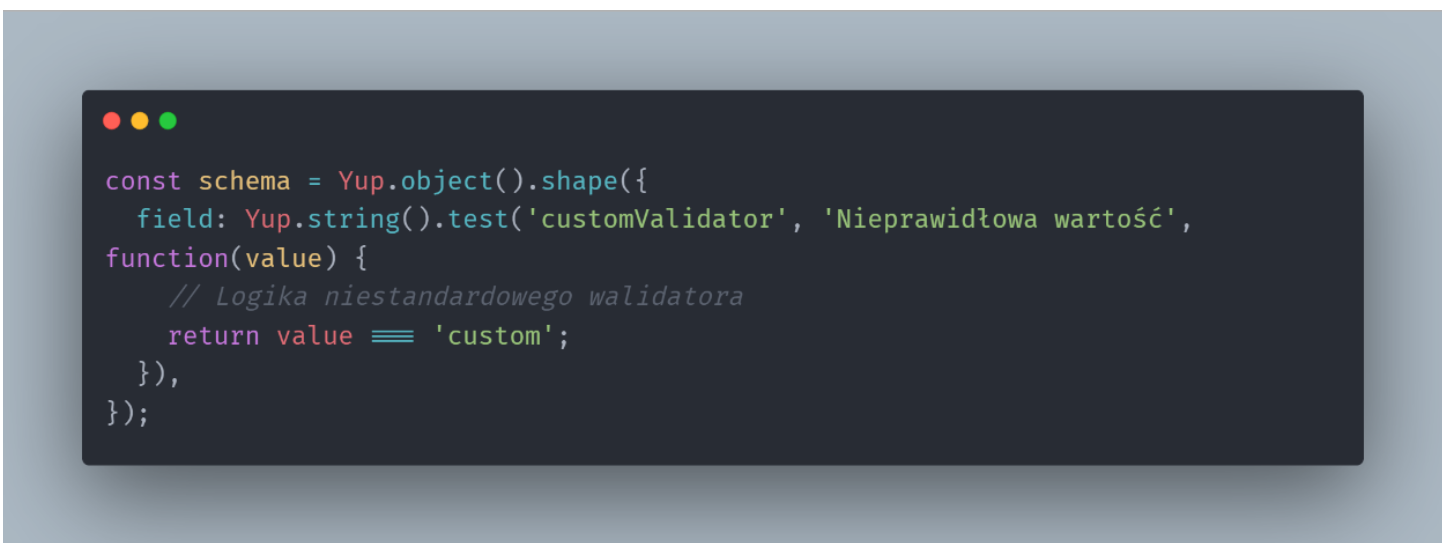Validation with the Yup library
Any developer starting a web application project has to choose a technology and approach to handling forms and their validation. Creating your validation system is often not a good idea due to the large amount of code you have to write. That’s when off-the-shelf solutions that make implementation easier and faster come to your rescue. One of the popular libraries for validating forms is Yup. In this article, you will look at how to use it and its advantages and disadvantages.
Creating a schema is a key step in the validation of form fields. Using the object() method, we declare the individual fields along with the validation rules provided by the library (you can find all the rules here).

If our field requires more complex rules, the library allows you to create your validation methods. Here is a simple example of such a method:

The Yup library provides many more possibilities and ways to overwrite rules under the project, which are described in the documentation.
Turning to the advantages of this approach, we can mention:
- Simple and clear syntax.
- Many ready-made validators.
- Ease of extending and creating custom validators.
- Integration with popular form management libraries.
The disadvantages that may affect the decision to use it cannot be overlooked either:
- Lack of support for older browsers.
- No display of error messages for users.
- Additional dependencies in the project.
In conclusion, the Yup library for form validation is an interesting solution for small and large projects wishing to easily and quickly ensure the correctness of data entered by users. The advantage of Yup is that you can customize it to your project by adding your validators. However, do not forget that for users using older browsers, this solution will not be supported. To sum up, using the Yup library for form validation is a good idea to speed up your work with ready-made validation methods.